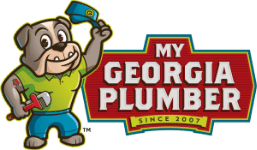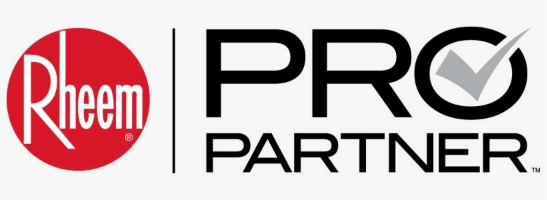
A continued summary of significant revisions of the International Plumbing Code to be published in the 2021 edition.
(subhead) Code Change: IPC Section 607.1.1, 607.1.2, Chapter 15
Revise Chapter 15 – Referenced Standards as follows:
1085-2018:
Performance Requirements for Water Heaters for Emergency Equipment
1084-2018:
Performance Requirements for Water Heaters used as Temperature Limiting Devices
1082-2018:
Performance Requirements for Water Heaters Used as Temperature Control Devices for Hot Water Distribution Systems.
(Only the standards list that were added are shown.)
Revise as follows:
607.1.1 Temperature limiting means.
A thermostat control for a water heater shall not only serve as the temperature limiting means for the purposes of complying with the requirements of this code for maximum allowable hot or tempered water delivery temperature at fixtures where the water heater complies with ASSE 1082, ASSE 1084, or ASSE 1085.
My comments: This code change is poorly worded and creates confusion and a scalding hazard. This section previously prohibited the thermostat on a water heater from being used for final temperature control in a hot or tempered water system at fixtures.
This code change could have left the prohibition of the water heater thermostat being used for controlling the final temperatures. It then could have listed exceptions for complying with the code, which would include the ASSE temperature-actuated and temperature-limiting valves, and the ASSE temperature-actuated and temperature-limiting water heaters as a means to comply with tempered water system temperature controls.
This code section does not allow a temperature-actuated mixing valve to be installed because it states “only” when the water heater complies with the ASSE water heater standards listed. It does not give a choice for temperature-limiting valves or temperature-actuated mixing valves. Water heater thermostats in most storage-type water heaters are not capable of accurately controlling the outlet temperature of a storage-type water heater. They can allow up to a 30-degree rise above the thermostat set point, according to the water heater standard.
Under normal intermittent usage conditions of a hot water system, scalding hot water can be produced. Some water heater manufacturers warn of this “stacking” issue in their literature. There are now a few manufacturers of mostly tankless water heaters making water heaters that have controls to limit the outlet temperature.
Tests were developed for the ASSE 1082 and ASSE 1084 and ASSE 1085 standards, yet many of these water heaters do not provide water hot enough to distribute hot water at a temperature high enough to control Legionella bacteria growth in accordance with ASHRAE guidelines (above 122 F) or water hot enough to disinfect the water heater itself or the downstream piping (minimum of 158 F to all parts of the distribution system). The majority of existing water heaters do not comply with the ASSE standards.
The ASSE 1085 water heater is intended to be used for emergency fixtures and must limit the outlet temperature to no more than 100 F, so the outlet temperature would be too low for most hot water or tempered water applications. This code change took away an important code provision that prohibits water heater thermostats from being used, which would then require temperature-actuated mixing valves with point-of-use mixing valves or temperature-limiting valves on hot water distribution systems.
With the language prohibiting the thermostat from being prohibited for final temperature control taken away, it will be a windfall for products conforming to some water heater standards and it eliminates or significantly minimizes the requirements for mixing valve products complying with another standard.
This code change was submitted on behalf of a manufacturer that proposed a code change that was good for them but not good for the manufacturers of other types of temperature controls that have worked fine for many decades. This is a serious health and safety issue because it removed the restriction of the water heater thermostat and it did not address temperature-actuated mixing valves.
Someday, it would be nice to see technical staff, code text correlation committee and a new code text conflict committee that can review these types of code changes and make comments for the code change proposal process, and maybe even help the proponent rewrite these code changes in better language before they get printed and distributed with obvious language problems or flaws for a three-year code cycle.
ASSE is relying on volunteers that have only reviewed the code changes related to ASSE standards. This one slipped through the cracks and they were in support of the code change because it added new ASSE standards, but I’m not sure ASSE or the valve manufacturers realized that it was also prohibiting other ASSE standard-compliant temperature control products that are currently acceptable for these applications.
There is a very short time from when the codes were printed and when the code changes were due for the next three-year cycle (a four-month period for the 2018 to 2021 code change cycle). This code language should be corrected in the next code cycle. Code changes are due this January 2021 for the 2024 code.
Although the proponent mentions in his reason statement that “thermostatic mixing valves” are a common means for controlling tempered water, the code section language by using the term “only” without listing the mixing valve standards could be interpreted to no longer allow mixing valves for plumbing fixtures.
607.1.2 Tempered water temperature control.
Tempered water shall be supplied through a water temperature controlled by one the following:
1. A limiting device that conforms conforming to ASSE 1070/ASME A112.1070/CSA B125.70 and shall limit the tempered water to not greater than set to a maximum of 110ºF (43ºC).
2. A thermostatic mixing valve conforming to ASSE 1017.
3. A water heater conforming to ASSE 1082.
4. A water heater conforming to ASSE 1084.
This provision shall not supersede the requirement for protective shower valves in accordance with Section 412.3.
Proponent’s reason statement: The restriction on the use of the water heater thermostat for regulating water temperature is based on standard water heaters. There are three new water heater standards that regulate the outlet temperature of the water heater. Hence, it is appropriate to reference these standards as the only water heaters in which the water heater thermostat can be used to regulate the upper temperature limit.
Tempered water is a comfort requirement, as well as a scald prevention requirement. However, comfort overrides the safety requirement since tempered water is limited to a maximum temperature of 110 F. Scalding temperatures are in excess of this temperature. Other viable means of controlling tempered water to 110 F or less are available in addition to a limiting device that complies with ASSE 1070/ASME A112.1070/CSA B125.70. The most common means of controlling tempered water is with a thermostatic mixing valve that complies with ASSE 1017.
A thermostatic mixing valve is an effective method of regulating the maximum temperature. The temperature is maintained within a few degrees, depending on the flow rate. Scalding temperatures are in excess of this temperature. Other viable means of maintaining the water temperature to a maximum of 110 F are water heaters meeting one of the three new water heater standards.
The three new standards for water heaters are ASSE 1082, ASSE 1084 and ASSE 1085. These water heater standards are equivalent to ASSE 1017, ASSE 1070 and ASSE 1071 respectively. As such, they have the capability of providing an equivalent level of performance as the corresponding mixing valve. While a water heater complying with ASSE 1071 is designed to supply tepid water for emergency fixtures, the tepid temperature range can also meet the tempered temperature range. Hence, an ASSE 1085 water heater is also a viable option.
My comments: Tempered water is defined in the code as 85 F to 110 F. This code change is also confusing because it mixes emergency fixture mixing valves and water heaters with valves up to 110 F.
I completely disagree with comfort being more important than safety. Safety should be the first priority. The ASSE 1085 standard is for emergency fixtures (emergency showers and eye/facewashes) where: if the temperature exceeds 100 F, the valve shuts down. This is because medical personnel have said that temperatures in excess of 100 F for the full flushing period required by OSHA can damage the eyes. This is an injury to the eyes that would not necessarily be considered a scald injury.
The ASSE temperature-limiting valve conforming to ASSE 1085 will shut down to prevent damage to the eyes at a temperature of 100 F and, therefore, it would not be appropriate for applications where 105 F or 110 F or higher temperatures are desired for comfort. The prohibition of using the water heater thermostat as the means of controlling the hot water temperature should remain.
This is a continuation of coverage on the significant plumbing code changes from the 2018 to the 2012 International Plumbing Code. Over the next few months, we will continue with the significant changes to the International Plumbing code. Following that, we will cover the significant changes to the Uniform Plumbing Code.







